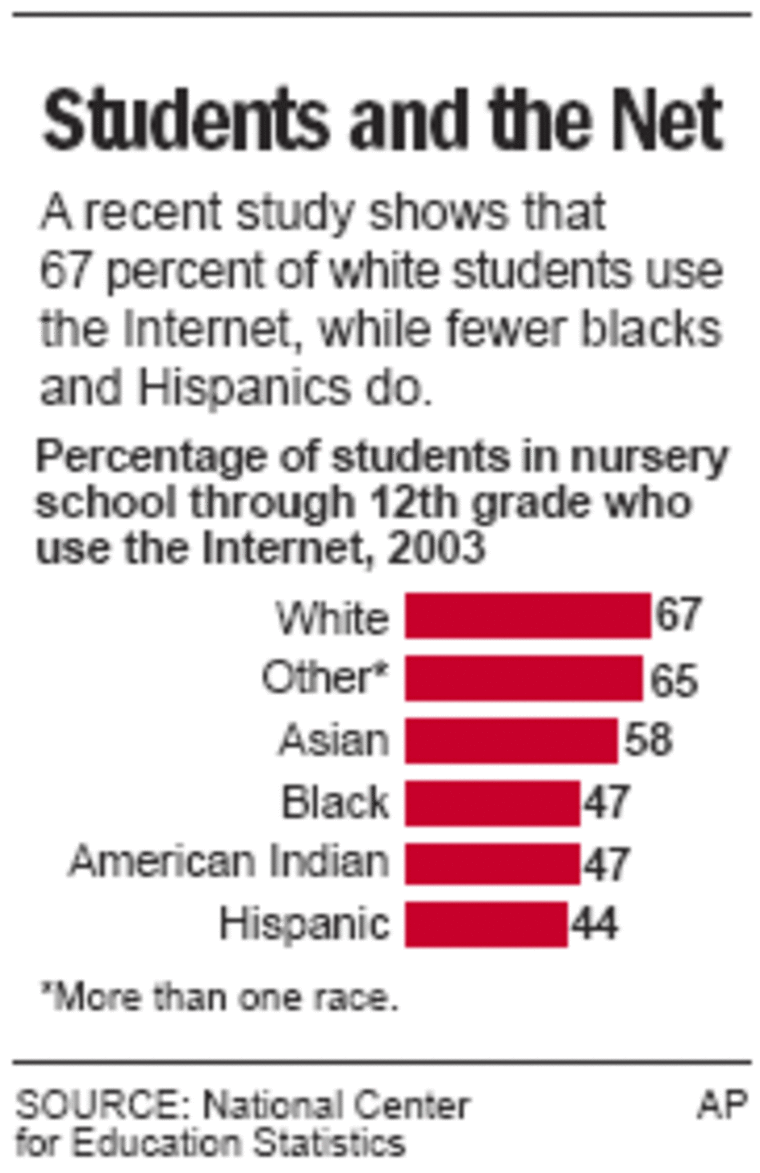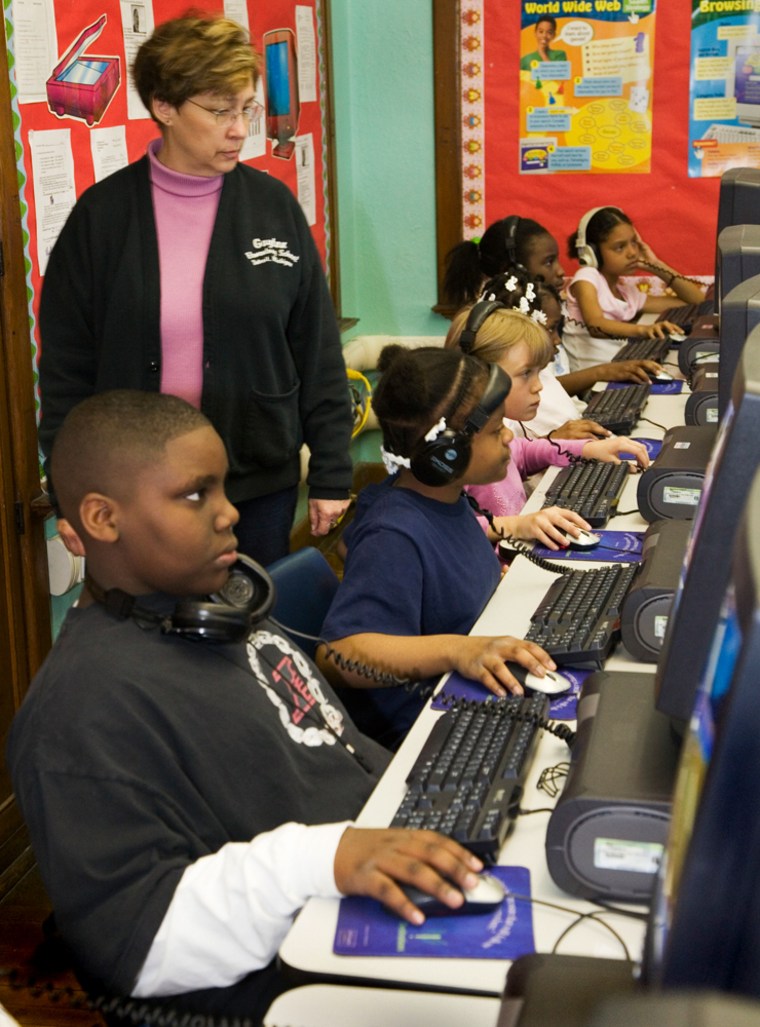Many more white children use the Internet than do Hispanic and black students, a reminder that going online is hardly a way of life for everyone.
Two of every three white students — 67 percent — use the Internet, but less than half of blacks and Hispanics do, according to federal data released Tuesday. For Hispanics the figure is 44 percent; for blacks, it's 47 percent.
"This creates incredible barriers for minorities," said Mark Lloyd, a senior fellow at the Center for American Progress and an analyst on how communications influence civil rights.
Not using the Internet "narrows their ability to even think about the kind of work they can be doing," Lloyd said. "It doesn't prepare them for a world in which they're going to be expected to know how to do these things."
The new data come from the National Center for Education Statistics, an arm of the Education Department. They are based on a national survey of households in 2003.
Overall, 91 percent of students in nursery school through 12th grade use computers; 59 percent use the Internet.
Within those numbers, the digital divide between groups is a national concern.
Studies have shown that access and ability to use the Internet help improve people's learning, job prospects and daily living.
Schools have taken steps to close the gaps.
Virtually all U.S. schools are connected to the Internet. The gaps in Internet usage between whites and minorities, though sizable, are smaller during the school day.
That's not the case at home.
Some 54 percent of white students use the Internet at home, compared with 26 percent of Hispanic and 27 percent of black youngsters. Limited access at home can erode a student's ability to research assignments, explore college scholarships or just get comfortable going online.
Among other findings:
- Household income, parent education and whether the home has two parents all correlate with higher computer and Internet use.
- Public school students are more likely than private school students to use both computers and the Internet.
- The gender gap in computer use has all but disappeared; girls are as likely as boys to use the Internet.

Kids use the Internet most often for completing school assignments, the new study says. But they also count on it for e-mail, sending instant messages and playing games.
The racial divide in computer usage is tied to broader problems, including poverty in black and Latino communities and even a cultural reluctance to use the Internet, Lloyd said.
Among other students, 58 percent of Asian-American children and 47 percent of American Indian students use the Internet.
The numbers are growing for all groups of students — a bit of good news, Lloyd said.
"We should celebrate that, with caution," he said. "The sky is not falling. The numbers are improving. But there is still a gap, and we need to find a way to address it."
